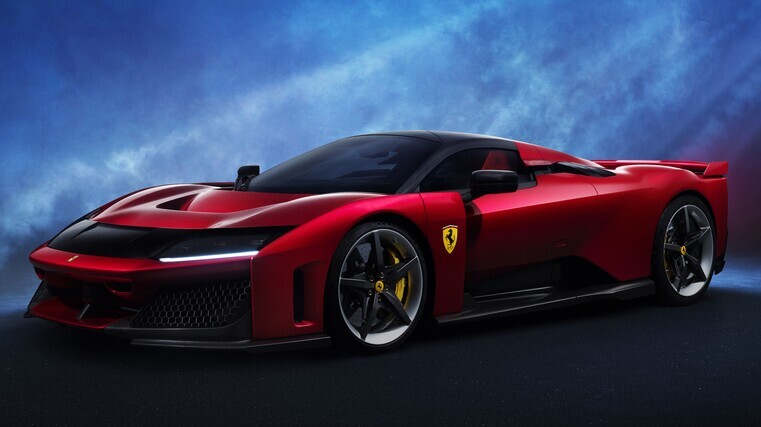Ferrari unleashes supercar

Ferrari has unveiled its new supercar, the F80, and announced it will only be producing 799 examples of the model.
The Italian marque says the F80 is designed to embody the “ultimate in engineering for an internal-combustion-engined vehicle and employs all the most advanced technological solutions, including latest-generation hybrid technology for the powertrain, to achieve unparalleled levels of power and torque”.
It draws inspiration from vehicles used in Formula 1 and the World Endurance Championship (WEC) and with three driving modes can be driven on the road or put through its paces on the track.
The cockpit area is described as having a single-seater feel, despite the car being homologated for two occupants, and the resulting architecture is labelled “one-plus”.
“The primary reason for this choice was to minimise width, to the benefit of aerodynamics – with less drag – and weight saving,” explains Ferrari.
“This concept is completely in keeping with the motorsport world from which this car not only draws inspiration but also inherits technological solutions.”
Powering the F80 is a three-litre, six-cylinder engine, which is based on the powerplant of the 499P that won the last two editions of the 24 Hours of Le Mans. It produces peak power of 900hp and is connected to an electric front axle and rear motor of the hybrid system.
Other commonalities with the Ferrari car competing in the WEC include the architecture, crankcase, layout and drive chains of the timing system, oil pump recovery circuit, bearings, injectors and GDI pumps.
Electric turbo technology (e-turbo) is included in a Ferrari for the first time. With an electric motor installed between the turbine and compressor of each turbo this allows for a specific power output and instantaneous response from low down in the rev range.
The electric motors used for the F80 are the first units developed, tested and manufactured entirely by Ferrari at Maranello, all with the specific goal of maximising performance and reducing weight.
Aerodynamics also play a key role in the F80, with solutions such as an active rear wing, rear diffuser, flat underbody, front triplane wing and S-Duct working in concert to generate 1000kg of downforce at 250kph.
An active suspension system features independent suspension all round thanks to four 48V electric motors, a double wishbone layout, active inboard dampers and upper wishbones created with 3D printing and additive manufacturing technology.
“This solution offers a number of advantages, such as an optimised layout, more precise wheel control, reduced unsprung mass, no requirement for an anti-roll bar and the introduction of a dedicated camber angle correction function,” explains Ferrari.
“This system fulfils two apparently irreconcilable requirements – the need for a very flat ride on the track, where variations in ride height must be minimised as much as possible, and the need for the compliance to effectively soak up bumps in road surfaces during normal driving.”

Three driving modes are available in the F80, these are hybrid, performance and qualify.
Hybrid mode is selected by default when the vehicle is switched on and enables all the functions intended to make the vehicle more efficient and useable in all real-world conditions. This mode prioritises energy recovery and battery charge maintenance.
Performance mode is geared towards delivering continuous levels of performance during extended stints on the track, optimising energy flows towards the battery to always keep its charge at about 70 per cent.
As for qualify, this lets the driver utilise all the power of the F80 by using the torque curves of the electric motor and internal combustion engine in the best combination possible for maximum performance.
The tub and other elements of the chassis of the F80, which includes butterfly doors, were developed using a multi-material approach.
The cell and roof are made of carbon fibre and other composites, while the front and rear subframes are made of aluminium and are fastened to the tub with titanium screws. At the rear there is an additional aluminium subframe, fastened to the main rear subframe with screws, for carrying the battery.
There is also a new steering wheel developed specifically for this car, which will make an appearance in the future road-going models from the Prancing Horse.
Slightly smaller than its predecessor and with flattened top and bottom rims, the steering wheel also has a smaller boss, improving visibility and accentuating the sense of sportiness when driving.





